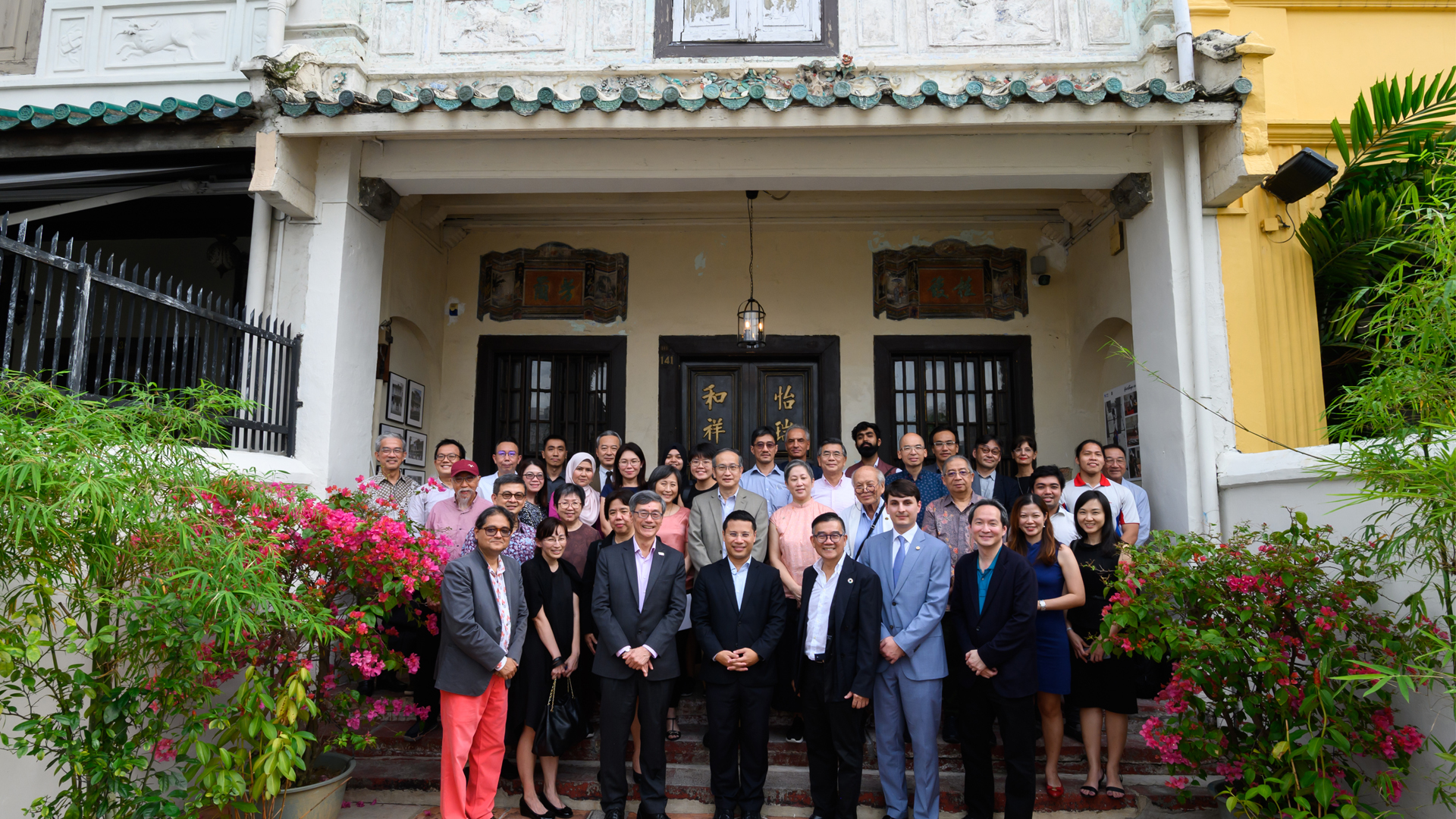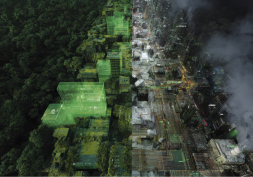The clock starts now: Conserving heritage through architecture capability
Follow CDE
Two Architecture researchers underscore the need and urgency in actively conserving heritage buildings in Singapore and at the same time impart, knowledge to the wider community.

Even though Singapore has over 7,200 heritage buildings and 75 national monuments, it remains a challenge to try to conserve buildings in the country.
“Singapore’s rich and varied heritage is under constant pressure from development, which is not the case in other countries with large land masses,” explained Professor Ho Puay-peng and Dr Nikhil Joshi from the Department of Architecture, College of Design and Engineering, NUS. “Heritage conservation should be seen as a process of managing change where a balance should be achieved between historic buildings or structures and development.”
Notably, in cost-conscious, pragmatic and tropical Singapore, conserving buildings poses a unique set of issues. It often costs more to restore or conserve buildings in historic settings, and the endeavour faces a lot more constraints than buildings elsewhere.
“At the same time, Singapore has a lack of good artisans who can repair historic buildings. The country also does not have sufficient appropriate traditional building materials for conservation and repair works,” said Joshi.
Then there are environmental considerations in conservation. Singapore has laid out ambitious plans towards achieving net-zero emissions. “This means that architects need to develop and employ more holistic and integrated retrofitting approaches that balance user behaviour and well-being with how the building functions, such as energy efficiency and its cultural significance,” said Ho.
For over two decades, Ho has worked on heritage projects in the UK, mainland China, Hong Kong and Singapore, while Joshi, has worked for more than a decade on heritage conservation projects across the world.
In Singapore, the duo’s research included several significant projects, such as the Old Police Academy, established in 1929, and the Cashin House, a house from Singapore's colonial era, built by an Irish merchant around the same decade, the Old Turf Club at Bukit Timah, Golden Mile Complex and the Shaw Tower, iconic brutalist buildings of independent Singapore.
A momentous turn in heritage conservation
The researchers recognised that it wasn’t always easy to educate the general public of a building’s significance to the country’s heritage. However, the turning point came in the form of Singapore’s plan in October 2021 to conserve Golden Mile Complex, a high-rise residential and commercial Brutalist building along Beach Road that resembles a typewriter. This project brought on unprecedented attention - and passion - in conservation.
The Golden Mile Complex was arguably the first multi-purpose complex that was built to propel Singapore’s ambitions as a global city in the 1970s. It was meant to develop Beach Road into a commercial, office and residence nexus of Singapore. When it recently became a Thai community hub, it then took on another layer of significance to Singapore’s social fabric.
“It’s really heartening to see more people care about and understand the significance of heritage values,” said Ho and Joshi, who were both part of the research study commissioned by the Urban Redevelopment Authority for the building. The researchers pointed out that the social significance of a building, unlike its architectural or economic value, can only be derived from qualitative studies. And this was where Golden Mile Complex represented a shift in the understanding of architectural heritage in Singapore-a shift that the researchers hope will persist to bring on a permanent change in mindset and motivation.
To do just that, the duo has initiated a first-of-its effort in downtown Singapore.

Broadening awareness of conservation: ArClab NUS
A heritage conservation project often conjures up images of scaffoldings, busy workers hustling around, with the curious and peering eyes of the public outside, hoping to see how the building is being transformed.
But not the one at 141 Neil Road in Singapore, where students, practitioners and the wider community are invited to be part of the process.
The Architectural Conservation Laboratory, or ArClab NUS, is a training and research centre situated in the historic building that turns it into a living laboratory where graduate students learn and understand the conservation and repair works needed to protect the building over the next four to five years.
“It’s a historic building that has not been conserved,” said Ho and Joshi. “Through ArClab NUS, it will become an exemplary and pedagogical demonstration of sensitive repair and conservation, adaptive reuse of heritage, and sustainable management of the historic environment.”
Ho chairs the management committee at ArClab NUS. Joshi is chair of its building committee, and is directly involved with the setting up and administering the research and training programmes at the centre.
Aside from developing techniques and exploring the use of materials in building conservation, ArClab NUS will help practitioners understand how greenery in historic districts can act as a nature-based approach to reducing emissions, and how high-density surroundings can impact the microclimate of the historical districts.
Furthermore, beyond helping students and the public understand the work that goes into conservation, ArClab NUS aims to build Singapore and the region’s capabilities in managing and conserving cultural heritage.
The centre will design and conduct short, advanced courses for heritage-management professionals. The courses are based on the UNESCO Competence Framework for Cultural Heritage Management, a set of tools to direct heritage practitioners to the essential skills and knowledge for the work that they do. Ho is the current UNESCO Chair on Architectural Heritage Conservation and Management in Asia.
Just like how Golden Mile Complex was a seminal moment in time for Singapore’s efforts at heritage conservation and management, the researchers hope that ArClab NUS can carry on the torch for these endeavours.
Their aim for ArClab NUS is that it can nurture at least 150 graduate students in the next five years, which will be when the building is fully repaired and retrofitted. Even when that happens, ArClab NUS will continue to conduct research and teaching programmes onsite that serve the needs and aspirations of Singapore and the regions regarding heritage management.
“We see heritage conservation as a more significant part of the sustainable development of Singapore’s built environment,” Ho and Joshi said. “ArClab NUS will advance and develop these ideas and solutions for climate-resilient heritage building transformation that meets Singapore’s net zero targets while accommodating the well-being and needs of the building users.
More about the launch at:
https://cde.nus.edu.sg/news-detail/living-heritage-lab-opens-in-historic-singapore-townhouse/
Related
Ho Puay Peng ▏Professor, Department of Architecture ▏ UNESCO Chair on Architectural Heritage Conservation and Management in Asia
Nikhil Joshi ▏Senior Lecturer, Department of Architecture ▏
Related Departments
If you are interested to connect with us, email us at cdenews@nus.edu.sg








